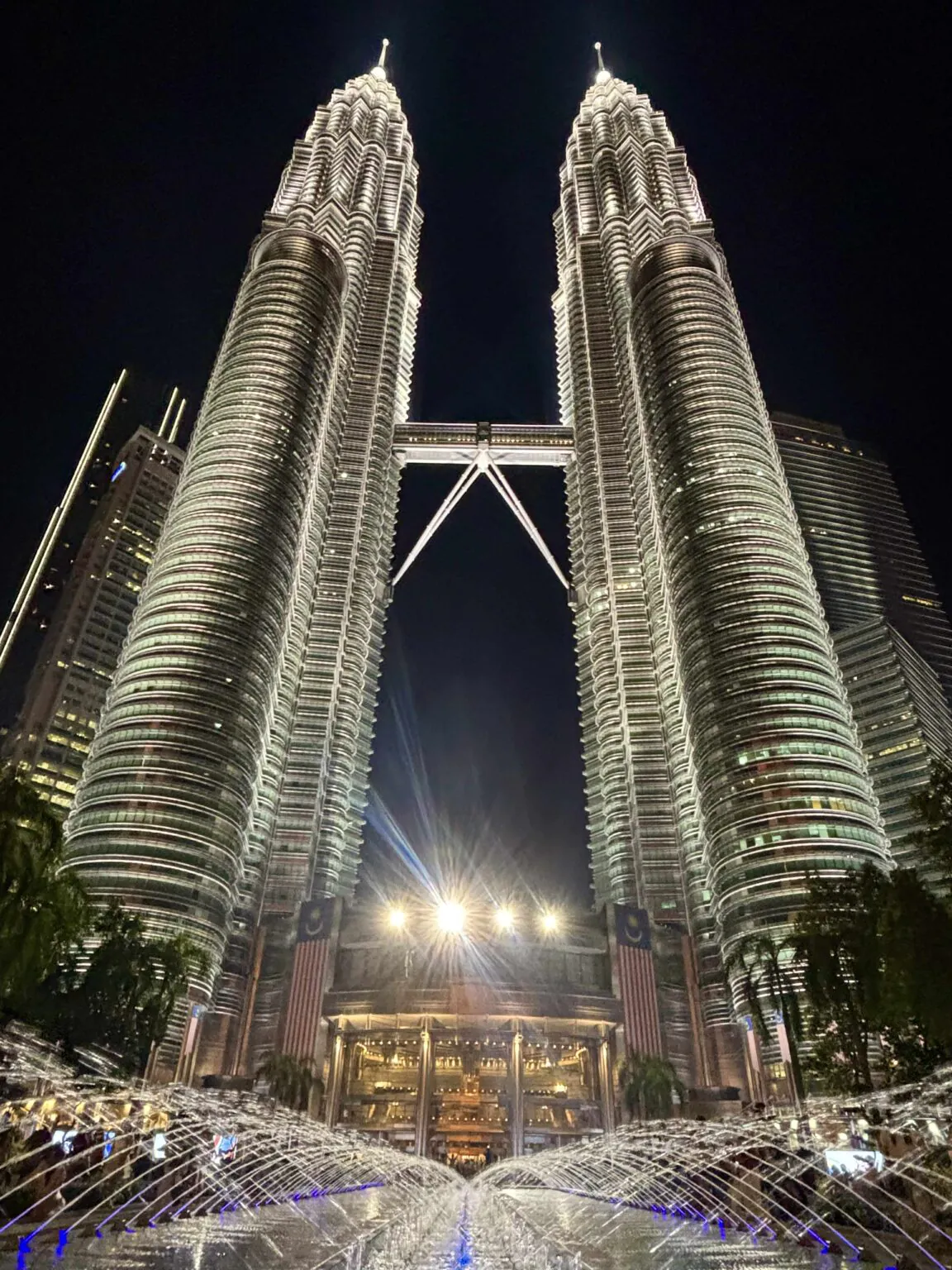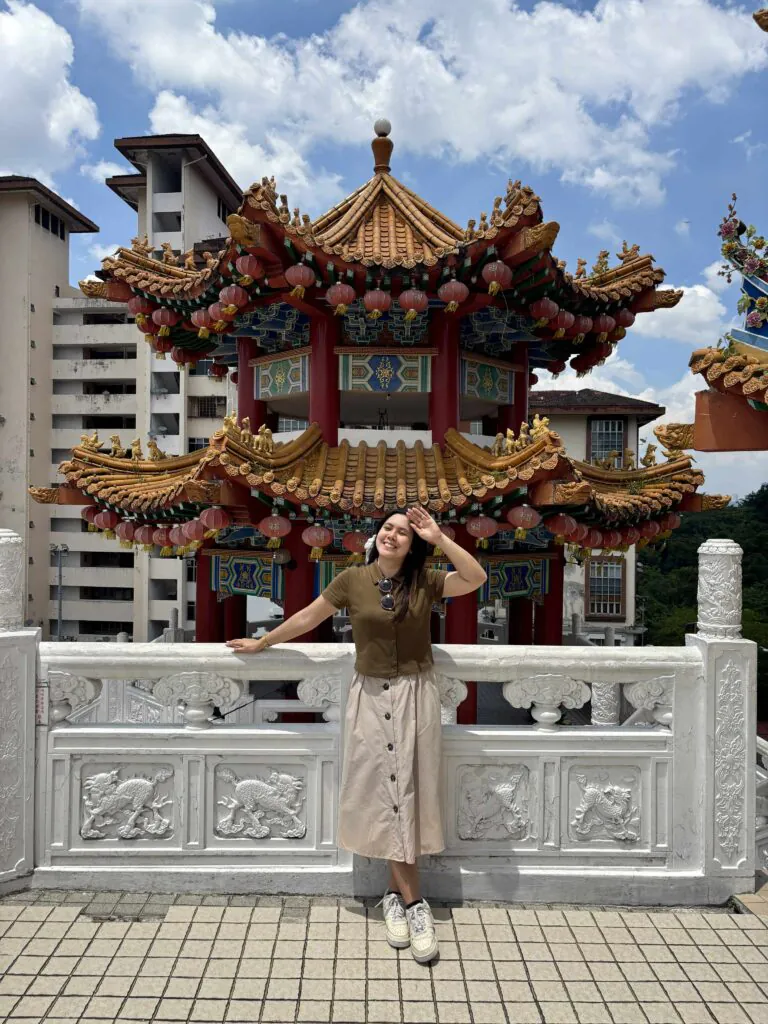After a full day of exploring some of Kuala Lumpur’s most famous attractions, my brother and I went back to our hotel to rest for a while before heading out again. The location of our accommodation was very convenient—most tourist spots were easily accessible either by foot or through Grab. Booking a Grab ride in Malaysia is simple and reliable, although I noticed that unlike in some other countries where drivers tend to chat, most Grab drivers here were quiet, making the ride feel calm and chill.
By around 7 PM, we headed out for dinner. Just a 7–10 minute walk from our hotel was Kuala Lumpur’s famous food street—Jalan Alor. When we arrived, food stalls were just starting to open, and the crowd was slowly building up. We walked all the way to the end first to check out all the food choices, and there were so many. We decided to eat at a stall that already had plenty of diners (always a good sign). We ordered buttered chicken, which turned out to be spicy but delicious. The staff were very friendly, and one elderly waiter even greeted us in Tagalog with “Salamat.” He must have met a lot of Filipino tourists over the years. He was so accommodating that he even offered to take our photo—a small gesture that added warmth to our dining experience.
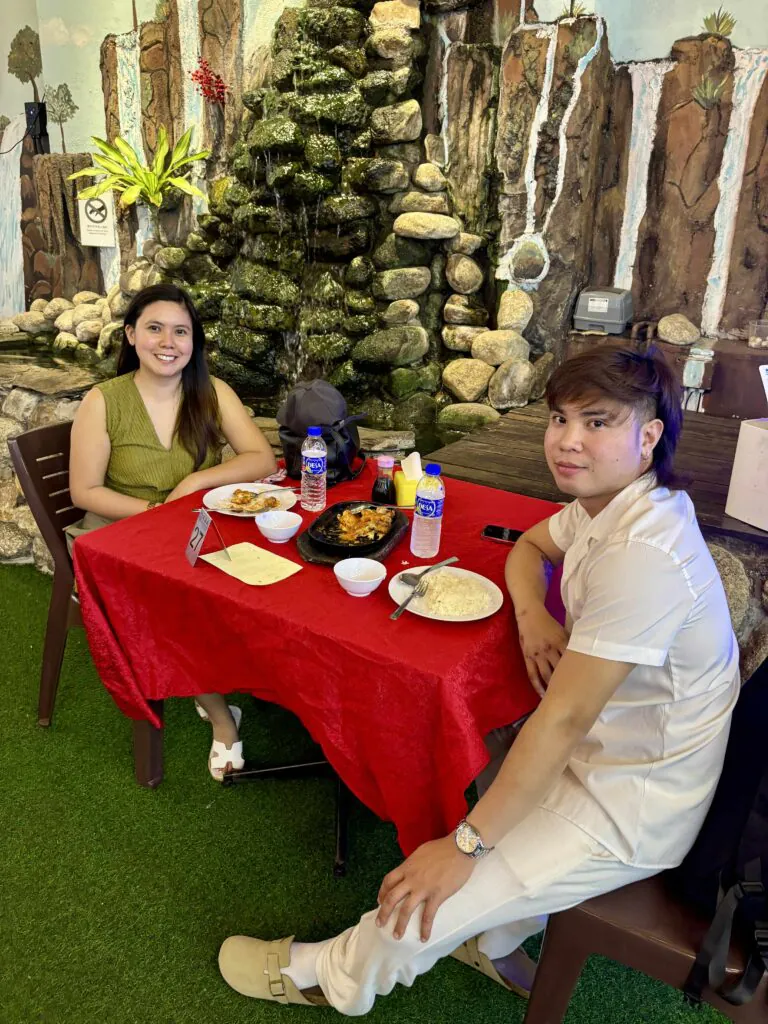
After dinner, we booked a Grab to the Petronas Twin Towers, and I couldn’t hide my excitement. The fare was 11 RM, and although traffic stretched the ride to about 20 minutes, the view of the towers from the car window was already breathtaking. Seeing the Petronas up close was even more amazing—their sheer height and shimmering design were absolutely mesmerizing.
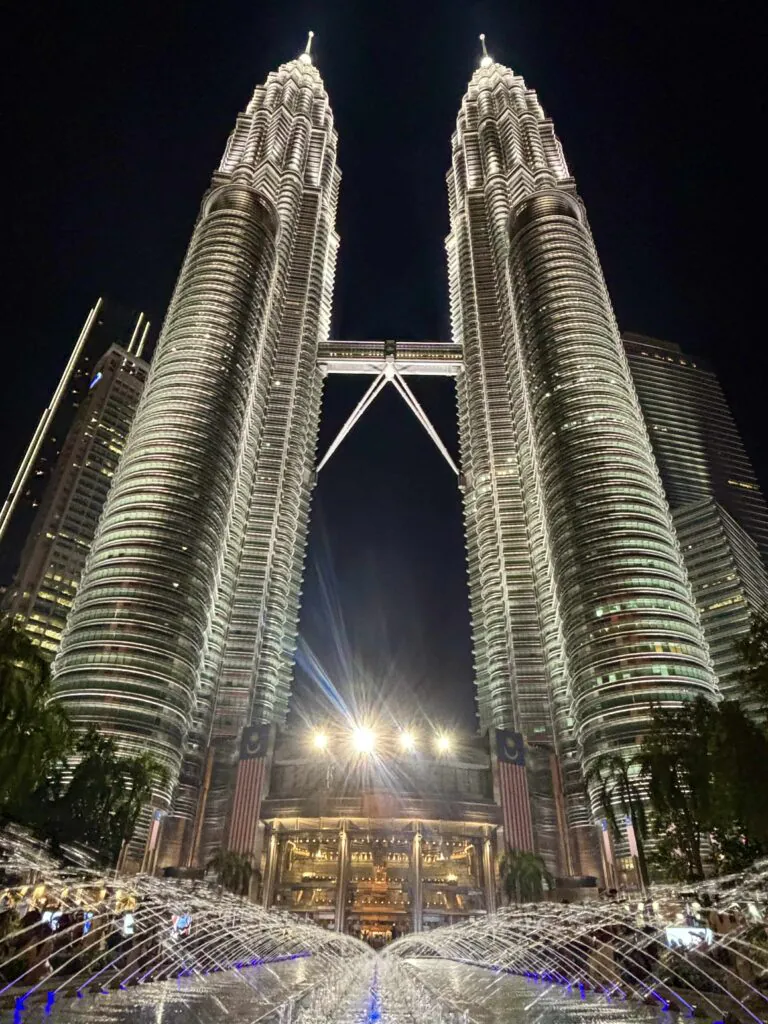
The Petronas Twin Towers are a must-see for any traveler. Standing at 452 meters, they once held the title of the world’s tallest buildings and remain an iconic symbol of Malaysia’s pride and progress. By day, the steel-and-glass façade looks sleek and elegant, and by night, the towers shine brilliantly against the skyline. Visitors can explore the Suria KLCC mall, stroll through KLCC Park, or go up to the Skybridge and observation deck for sweeping city views. Whether you’re into photography, architecture, or just enjoying cityscapes, the Petronas Towers won’t disappoint.
Of course, the challenge was finding a good spot to take photos since there were crowds everywhere, all trying to capture that perfect shot. It can feel a bit stressful, but with patience, you’ll get that Instagram-worthy photo—it’s worth it! We also noticed local photographers offering to take professional shots, though we skipped it since it seemed a bit pricey.
From there, we walked about 10–15 minutes to another famous attraction—the Saloma Link Bridge.
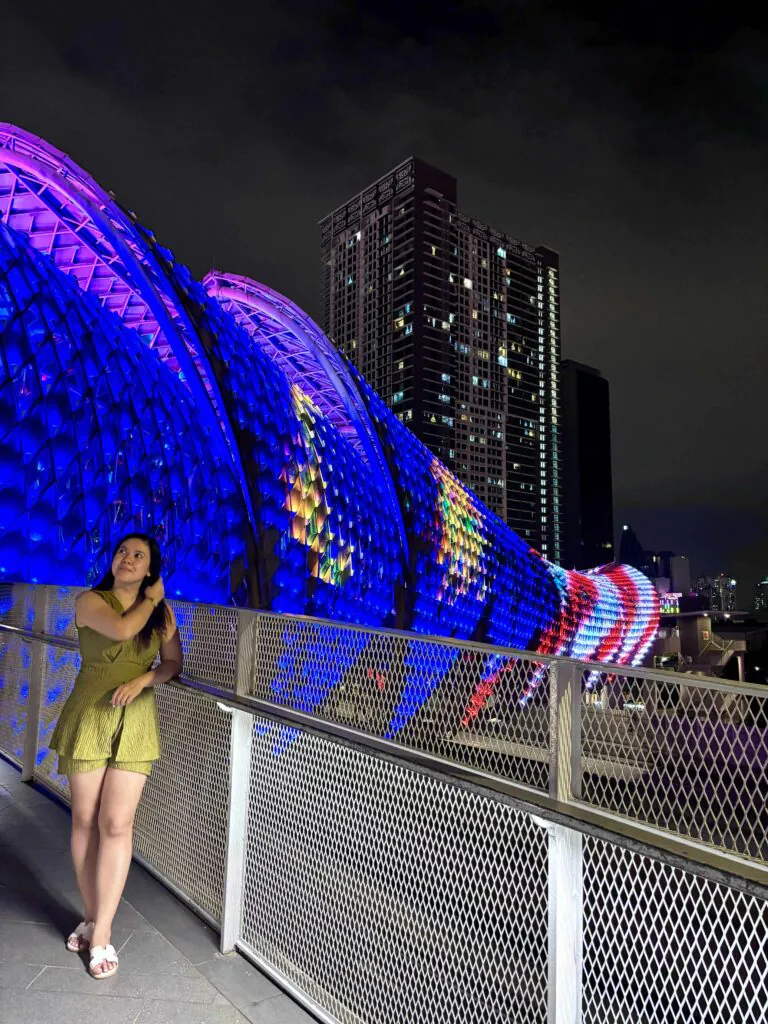
The Saloma Link Bridge is more than just a pedestrian walkway; it’s an architectural landmark that connects Kampung Baru to the Kuala Lumpur City Centre. Inspired by the traditional Malay “sirih junjung” (betel leaf arrangement), its flowing structure is a beauty on its own, but it truly comes alive at night when illuminated with colorful LED lights. From the bridge, you also get a perfect framed view of the Petronas Twin Towers, making it a fantastic spot for photos and evening strolls. It was a bit tricky to take pictures because of the passing crowd, but the colorful lights made the experience memorable.
Satisfied with our first day—especially having seen the iconic Petronas Towers—we headed back to our hotel by Grab (again 11 RM) and called it a night.
The next morning, we woke up a little late around 8 AM, tired from the previous day’s adventure. Breakfast at our hotel was buffet style and already included in our stay. The spread was impressive: salads, cereals, bread, fruits, hot viands, and even desserts. We were so hungry we didn’t even think of taking photos—but it was a hearty and satisfying meal that gave us the energy we needed.
Our original plan was to visit Genting Highlands, but since we booked too late on Klook, we had to change our schedule. Instead, we decided to visit Merdeka Square (Dataran Merdeka). Coincidentally, we learned that Malaysia Day would be celebrated on August 31, 2025, which explained the abundance of flags in the area. Luckily, we visited a day early, avoiding the heavy crowds that would surely gather for the celebrations.
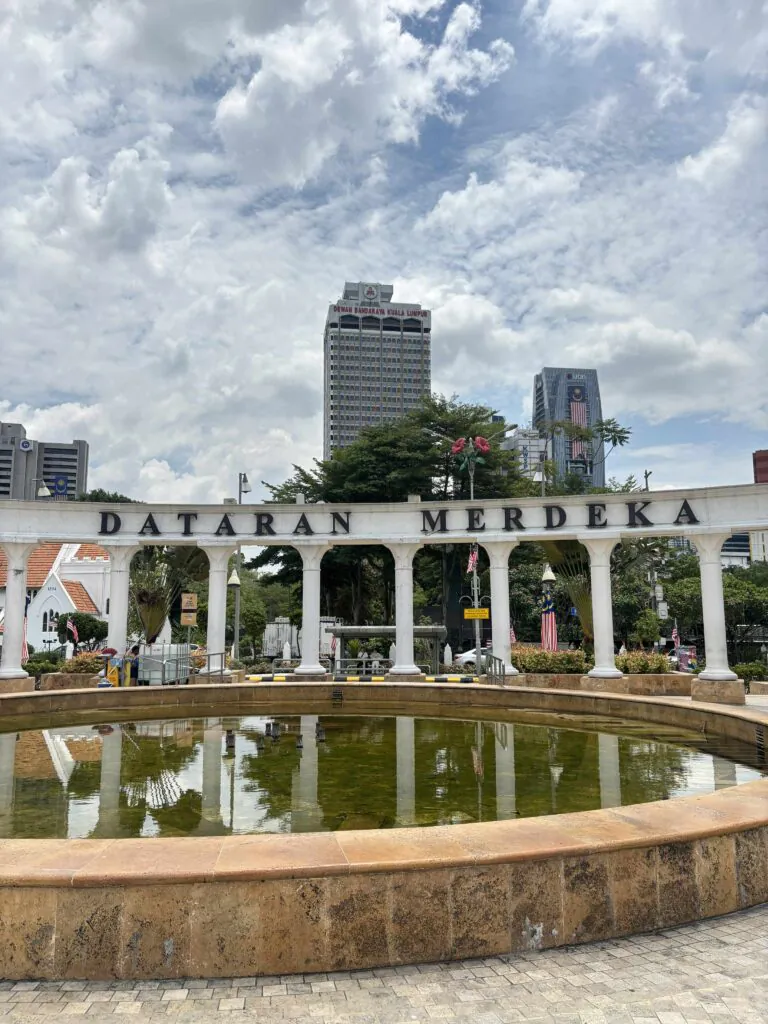
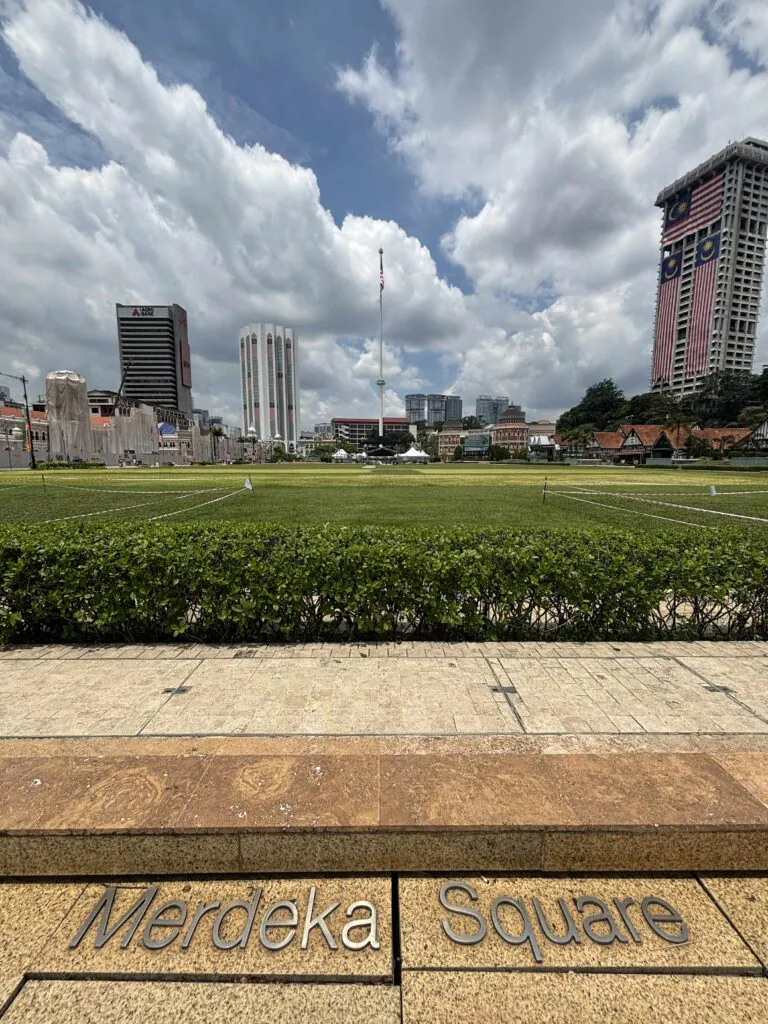
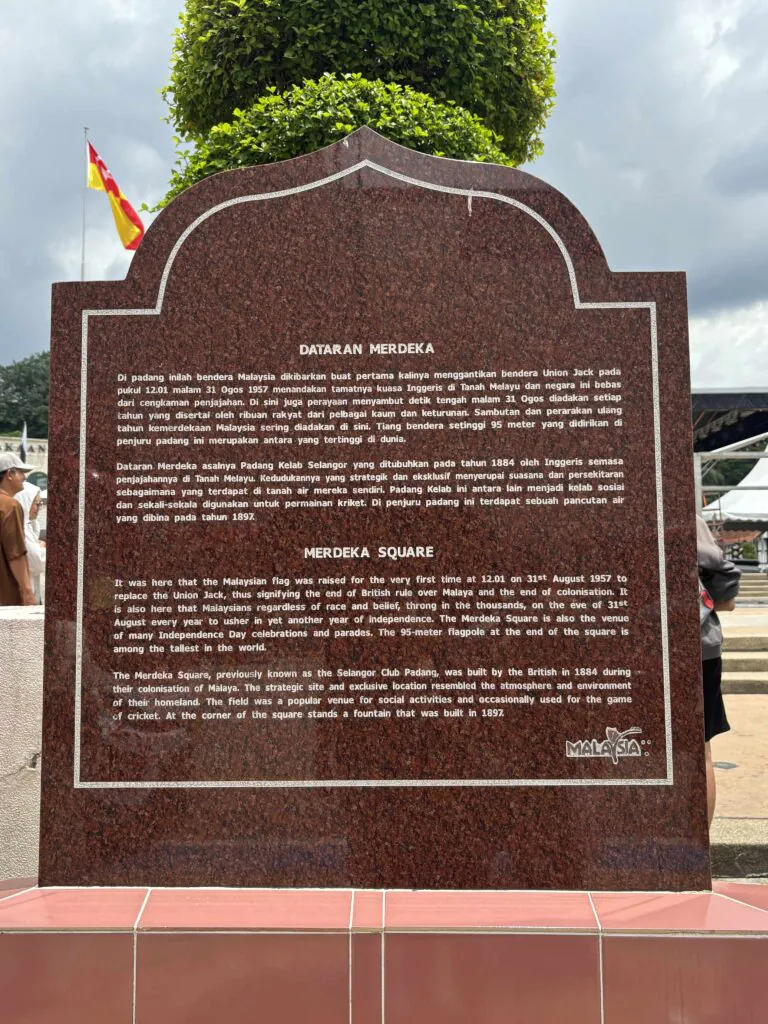
We booked a Grab for 8 RM and reached Merdeka Square in about 13 minutes. The plaza was spacious and wide, perfect for leisurely walks. We strolled around, took photos, and even crossed over to the River of Life for more snapshots.
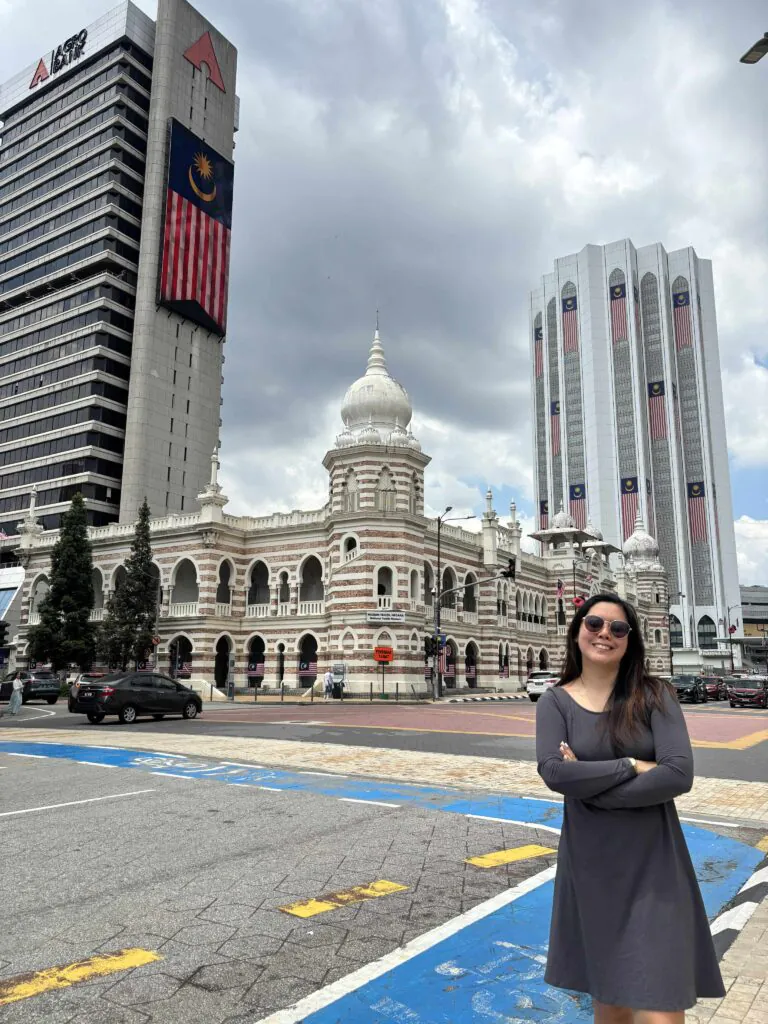
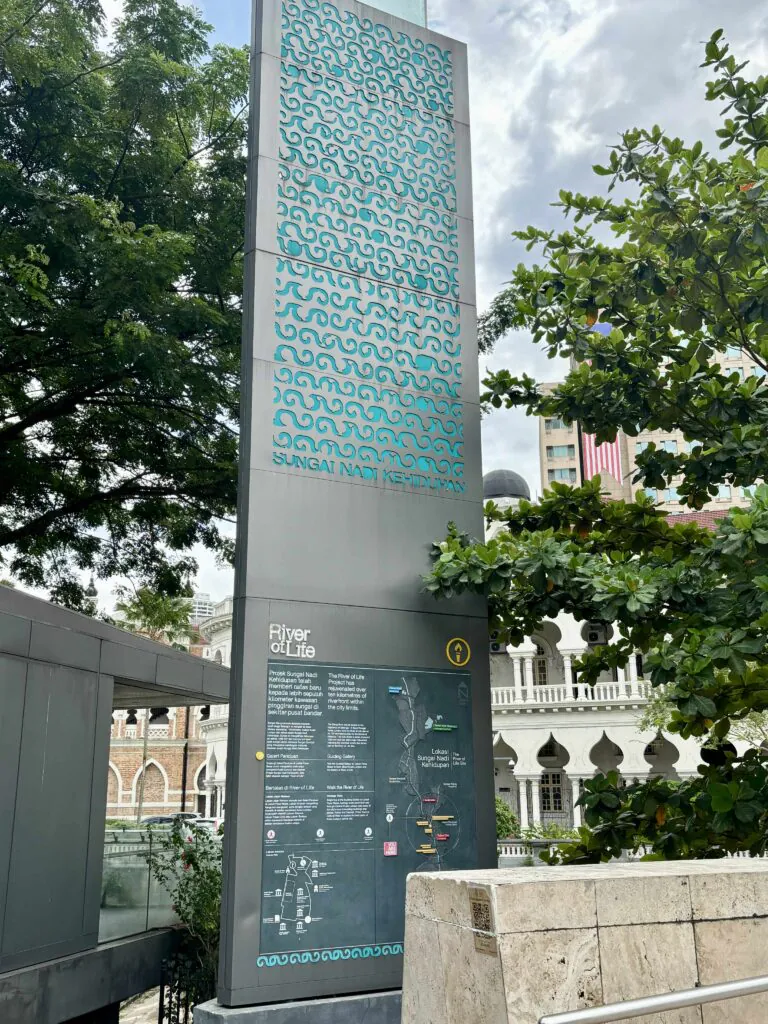
While walking, we reached Masjid Jamek, one of the oldest mosques in Kuala Lumpur. There was a 1 RM entrance fee, and visitors are required to wear modest clothing—balabal (robes) were provided to cover up before entering.
Masjid Jamek is truly a peaceful escape in the heart of the city. Built in 1909 at the meeting point of the Klang and Gombak rivers (the birthplace of Kuala Lumpur), its stunning Mughal, Moorish, and Indo-Saracenic architecture stands out with domes, minarets, and arches. The mosque’s white façade with red-brick accents makes a striking contrast against the modern skyscrapers nearby. More than just its beauty, the mosque gives visitors a glimpse of Malaysia’s spiritual side, with guided tours available to share its history and significance.
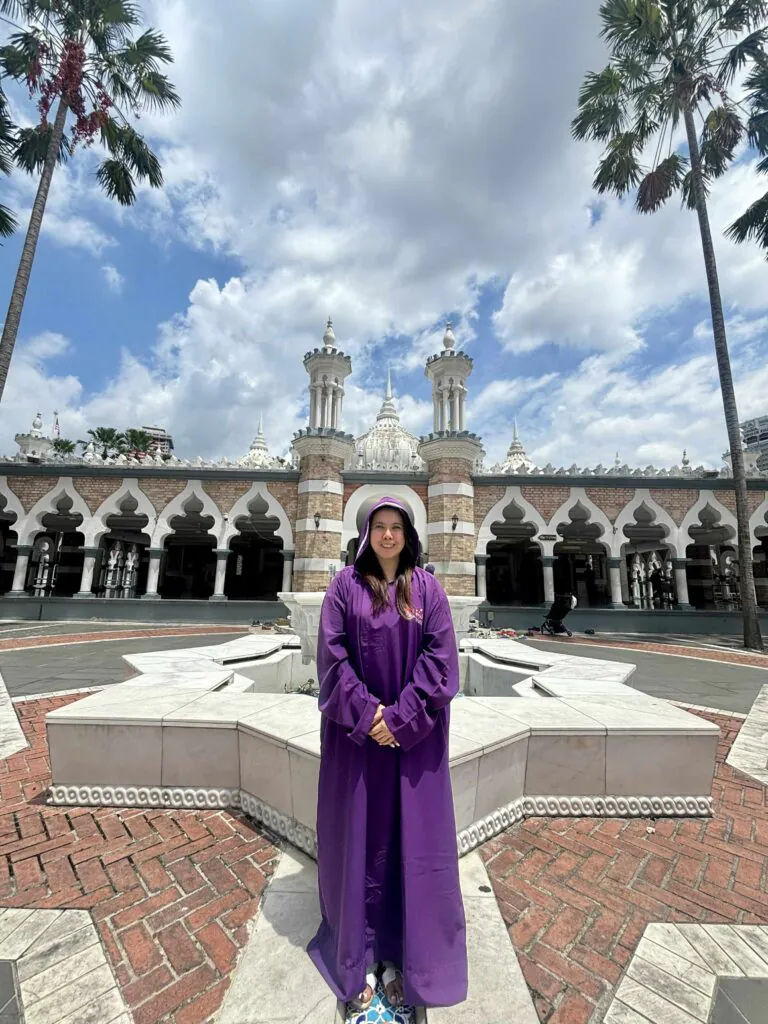
From there, we walked further and reached the main grounds of Dataran Merdeka, the historic square where Malaysia’s independence was declared in 1957. It’s also where the national flag is proudly raised during important celebrations. The area was spacious but hot at noon, with the sun directly overhead, yet still a beautiful spot for photos.
Before leaving, we made a stop at the “I ❤ KL” signage near the Kuala Lumpur Gallery, another fun photo spot for tourists. Afterwards, we booked a Grab (15 RM for a 20-minute ride) to TBS Terminal to arrange our bus tickets for Singapore, which was set to be our side trip the following day.
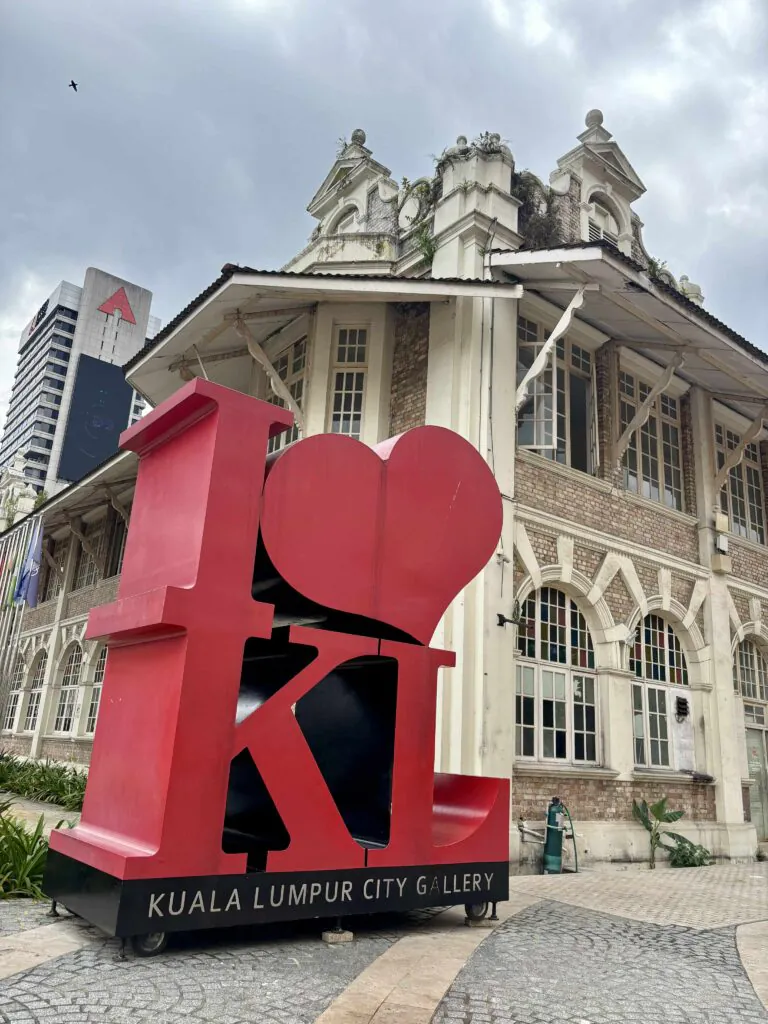
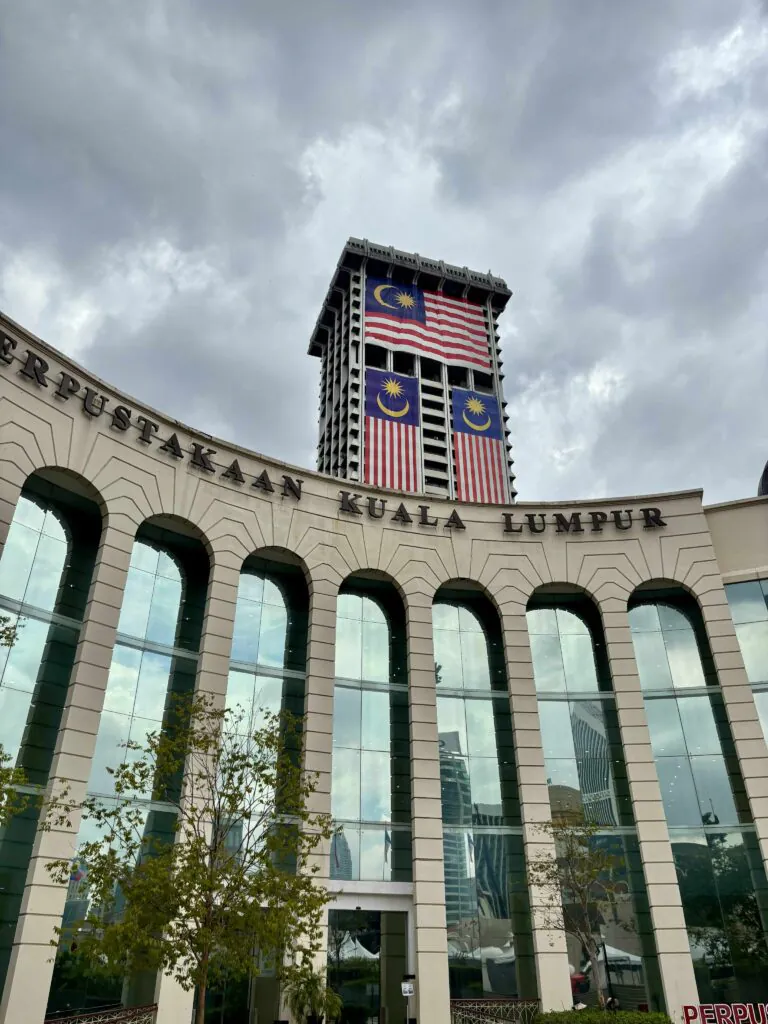
👉 Read my KL, Malaysia – Part 1 blog here: https://mjtravels.blog/kl-malaysia-part-1/
